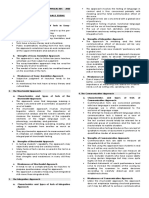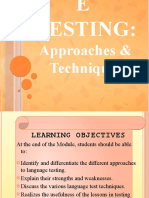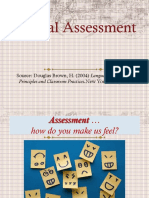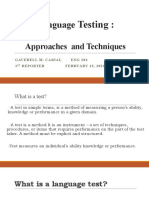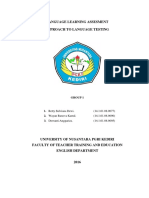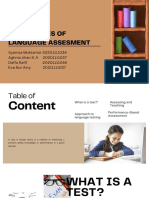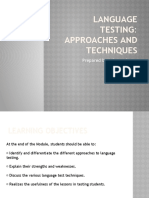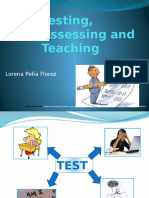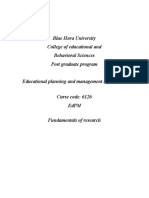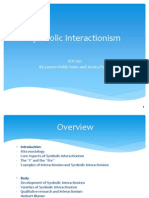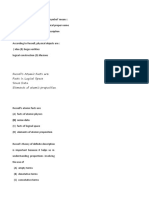0% found this document useful (0 votes)
109 views20 pagesApproaches in Language Testing
This document discusses four main approaches to language testing: 1) Essay-translation, which relies on subjective teacher judgement and focuses on grammar, translation, and essays; 2) Psychometric-structuralist (discrete-point tests), which applies psychometric principles and tests subskills objectively; 3) Integrative, which holistically assesses meaningful language use by integrating linguistic and extra-linguistic skills; and 4) Communicative, which focuses on real-life language use and measures communicative competence through tasks like interviews and discussions. Each approach has strengths and weaknesses for different teaching methods and levels of analysis.
Uploaded by
Wista SuroyyaCopyright
© © All Rights Reserved
We take content rights seriously. If you suspect this is your content, claim it here.
Available Formats
Download as PPTX, PDF, TXT or read online on Scribd
0% found this document useful (0 votes)
109 views20 pagesApproaches in Language Testing
This document discusses four main approaches to language testing: 1) Essay-translation, which relies on subjective teacher judgement and focuses on grammar, translation, and essays; 2) Psychometric-structuralist (discrete-point tests), which applies psychometric principles and tests subskills objectively; 3) Integrative, which holistically assesses meaningful language use by integrating linguistic and extra-linguistic skills; and 4) Communicative, which focuses on real-life language use and measures communicative competence through tasks like interviews and discussions. Each approach has strengths and weaknesses for different teaching methods and levels of analysis.
Uploaded by
Wista SuroyyaCopyright
© © All Rights Reserved
We take content rights seriously. If you suspect this is your content, claim it here.
Available Formats
Download as PPTX, PDF, TXT or read online on Scribd
/ 20




